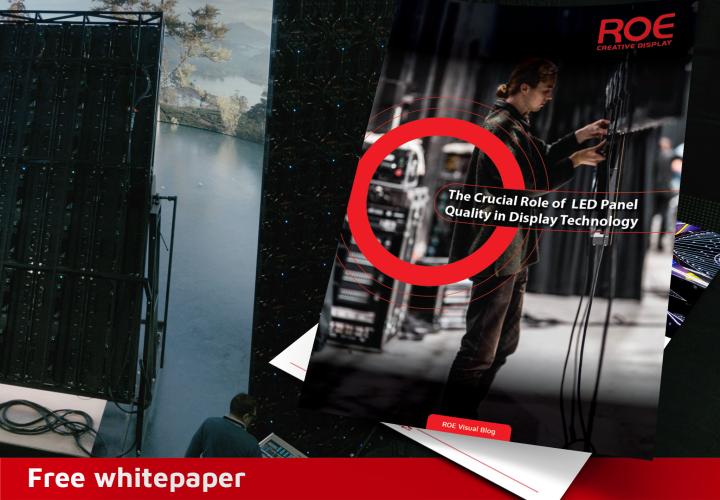Enhancing Your Technical Workflow to 2.5G?
Here’s What You Need to Consider
In the fast-paced world of technology, staying ahead of the curve is essential to remain competitive and meet the demands of an ever-evolving market. The evolution of LED panel technology is no exception.
Recently, our Ruby LED panels, running on Megapixel VR's HELIOS LED processing platform, underwent a significant upgrade, transitioning from a 1G connection to a cutting-edge 2.5G connection.
This transformation has far-reaching implications for your technical workflow, especially concerning cabling, cable categories, maximum cable lengths, and system design.
In this blog, we'll delve into the details of this upgrade and explore how it can impact your LED panel setup.
The Leap from 1G to 2.5G
Before we dive into the technicalities, let's understand the significance of this transition. Ruby LED panels, already known for their exceptional visual performance, have taken a significant step forward by introducing a 2.5G connection. This upgrade enhances data throughput, enabling faster communication between your control systems and the LED panels. As a result, your cabling becomes more efficient and flexible, feeding more pixels per data run.
Cabling Considerations
With the increased bandwidth of a 2.5G connection, ensuring your cabling infrastructure can support this upgrade is crucial. Here's what you need to know:
Transition from Cat5 to Cat7
The transition from a 1G connection to 2.5G often necessitates a shift in cabling categories. While Cat5e or Cat6 cables might have sufficed for 1G, a Cat7 cable is recommended for 2.5G. Cat7 cables are designed to handle higher frequencies and provide better shielding, reducing interference and crosstalk.
Maximum Cable Lengths
Cable lengths can significantly impact the performance of your LED panel setup. With 2.5G, you must pay attention to cable lengths to ensure signal integrity.
Compared to 1G connections, 2.5G connections are more sensitive to cable length. As the bandwidth increases, the allowable cable length decreases. While Cat5e or Cat6 cables could stretch up to 90 meters, Cat7 cables should be kept to a maximum of around 50 meters for optimal performance. Shortening cable runs might require additional distribution boxes fed by 10G fiber feeds.
System design
When working with 2.5G you should take the higher bandwidth into account while designing your LED-system. The bandwidth increase means you can have more LED-panels on a single string, resulting for example in larger columns or fewer first data runs in smaller setups.
As an example, we look at the Ruby 1.9 in a 60Hz, 12bit system. The panel has a pixel density of 256x256 pixels, resulting in a pixel amount of 65.536 pixels per panel. In a 1G situation, this would result in having a maximum of 6 panels in a single string and a port utilization of 93%, whereas in a 2,5G connection configuration you could have a maximum of 16 panels in a single string with a port utilization of 98%.
In general, if you move into using smaller pixel pitches or higher framerates, the higher bandwidth is a necessary upgrade to preserve simplicity in your entire system design. Please find more examples in the table below for your reference.
|
Panel |
Framerate |
Pixels per panel |
1G max. panels |
2.5G max. panels |
|
Ruby 1.9 |
60Hz, 12-bit |
256x256 |
6 |
16 |
|
Ruby 1.2 |
60Hz, 12-bit |
400x400 |
2 |
6 |
|
Ruby 1.9 |
120Hz, 12-bit |
256x256 |
3 |
7 |
|
Ruby 1.9 |
240Hz, 12-bit |
256x256 |
1 |
3 |
Conclusion
The transition of Ruby LED panels from a 1G to a 2.5G connection is a significant leap forward in the world of LED display technology.
However, it comes with specific technical considerations, such as upgrading to Cat7 cabling, accommodating reduced cable lengths, and rethinking system design. With careful planning and the proper infrastructure, this upgrade can provide you with a powerful and efficient LED panel system that meets the demands of today's high-performance environments.
Consult our expert support team
As you prepare to make this transition, consider consulting with our expert support team to ensure that your upgraded system meets your current needs and remains adaptable to future technological advancements.
With the right approach, you can harness the full potential of your Ruby LED panels' 2.5G connection and stay ahead of the curve in the dynamic world of LED technology.
Related items

LED Processing Software Updates
Our LED processing partners have released three significant software updates, introducing a range of enhancements to Brompton, Megapixel, and iSet. These updates bring several improvements, all aimed at optimising performance and efficiency. Read on to explore the key improvements and their impact on your workflow.

IBC Inspirational Panel Sessions
ROE Visual brought inspiring panel sessions to IBC 2024! Enjoy the recordings of these panel sessions, featuring top industry specialists in XR, virtual production, and live broadcast. The panel sessions include in-depth case studies, such as the BBC UEFA Broadcast Studio, the commercial potential of VP highlighted by "The Garage," broadcast strategies for elections, and insights into the development of the Gran Canaria Film Studio.

The Crucial Role of LED Panel Quality in Display Technology
When it comes to high-quality visual displays, the spotlight often falls on the sophistication of LED processors, but the significance of the LED panel itself should not be underestimated. The intrinsic quality of the LED panel plays a pivotal role in achieving an unparalleled visual experience.

